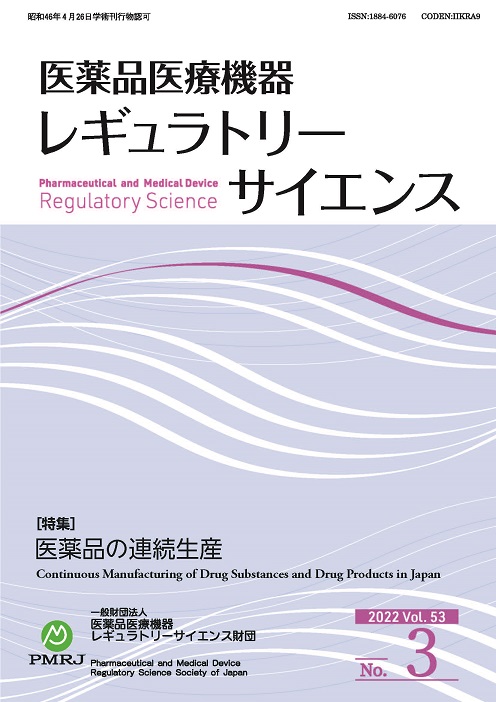Volume 53, Issue 3
Displaying 1-14 of 14 articles from this issue
- |<
- <
- 1
- >
- >|
-
2022Volume 53Issue 3 Pages 172-177
Published: 2022
Released on J-STAGE: August 03, 2022
Download PDF (397K) -
2022Volume 53Issue 3 Pages 178-182
Published: 2022
Released on J-STAGE: August 03, 2022
Download PDF (1423K) -
2022Volume 53Issue 3 Pages 183-191
Published: 2022
Released on J-STAGE: August 03, 2022
Download PDF (5429K) -
2022Volume 53Issue 3 Pages 192-197
Published: 2022
Released on J-STAGE: August 03, 2022
Download PDF (380K) -
2022Volume 53Issue 3 Pages 198-202
Published: 2022
Released on J-STAGE: August 03, 2022
Download PDF (3340K) -
2022Volume 53Issue 3 Pages 203-207
Published: 2022
Released on J-STAGE: August 03, 2022
Download PDF (2480K)
-
2022Volume 53Issue 3 Pages 208-210
Published: 2022
Released on J-STAGE: August 03, 2022
Download PDF (244K)
-
2022Volume 53Issue 3 Pages 211-218
Published: 2022
Released on J-STAGE: August 03, 2022
Download PDF (432K)
-
2022Volume 53Issue 3 Pages 219-222
Published: 2022
Released on J-STAGE: August 03, 2022
Download PDF (3042K)
-
2022Volume 53Issue 3 Pages 223-238
Published: 2022
Released on J-STAGE: August 03, 2022
Download PDF (653K)
-
2022Volume 53Issue 3 Pages 239-248
Published: 2022
Released on J-STAGE: August 03, 2022
Download PDF (1082K)
-
2022Volume 53Issue 3 Pages 249-254
Published: 2022
Released on J-STAGE: August 03, 2022
Download PDF (620K) -
2022Volume 53Issue 3 Pages 255-260
Published: 2022
Released on J-STAGE: August 03, 2022
Download PDF (514K)
-
2022Volume 53Issue 3 Pages 261-268
Published: 2022
Released on J-STAGE: August 03, 2022
Download PDF (774K)
- |<
- <
- 1
- >
- >|
